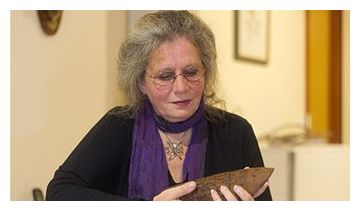
Dr Kelly uses logic to understand how ancient cultures stored knowledge and found all of them fit the same pattern by which practical information is stored.
Whether they were a mobile hunter gatherer culture or a settled culture, Dr Kelly says they all used the same methods for storing information.
The devises may have changed over time but the methods remained the same.
She sees Stonehenge and many other ancient structures including hand held devices as memory technology.
"What the theories don't include is how much practical knowledge and how much rational intelligence these people must have had because biologically they are exactly the same as us," said Dr Kelly.
She said there is a tendency for oral cultures to be understood in simplistic terms using spirituality and religion to explain structures where in fact they developed complex systems.
"In all oral cultures they have to store the information in memory, they can't write it down so they have the most extraordinary memory methods," said Dr Kelly.
The art of memory
She said the method of loci or the art of memory, a learning technique to help with retaining information wasn't invented by the ancient Greeks and Romans.
Used by many memory contest champions to recall lists and numbers, Dr Kelly believes this technique of using visual cues to help remember things was developed by Indigenous cultures around the world.
"The way Australian Aboriginal cultures store information in positions in the landscape, their sacred sites, is exactly the same method," she said.
It is about memorising the layout of a landscape, building or object when wanting to recall certain information.
"They can imagine themselves moving from site to site and recall the information stored there," said Dr Kelly.
She said because Australian Indigenous tribes were mobile they tended to carry devices whereas with settled cultures there was a built environment but those cultures that existed somewhere in the middle they tended to replicated the landscape.
"So a circle of stones, circle of timber posts is the perfect way to replicate the annual cycle and that's why circles of stones and timber are found all over the world not just the British Neolithic," she said.
Add to that the rituals of performance and the technique of retaining information are further strengthened according to Dr Kelly.
"So when they perform a ritual at a given site those songs aren't just abstract wishy washy stuff they are storing very specific information," said Dr Kelly.
"They're dancing the stories that encode the information."
Performance
According to Dr Kelly ancient cultures had to think of these creative and inventive ways in which to store information because of the absence of a written language.
Along with physical memory spaces and devices, song and dance was often incorporated as part of the complex knowledge storage.
"The idea that entertainment and knowledge are separated is very much a recent western thing," said Dr Kelly.
"In the olden days the orators and scientists were the big entertainers of their time."
When studying the Yolngu Aboriginal people from the Northern Territory she found the songs performed contained all the knowledge of their culture.
Dr Kelly discovered that memory retention techniques were the only way they would be able to remember vast amounts of information including: hundreds of plant and animal species; complex kinship systems; inter-tribal agreements; land management and geology to name a few.
"So in Indigenous cultures entertainment and knowledge are not separated," she said.
Dr Kelly believes there is still room for spirituality and religion but current theories don't take into account logic.
"I've added the rational intellect side into the story, the moment you do that you start looking for these memory devices and it's not just the big posts and circles its hand held devices," she said.



Lol, that's because science doesn't believe in religion. Religion played a major part in the lives of ancient people.